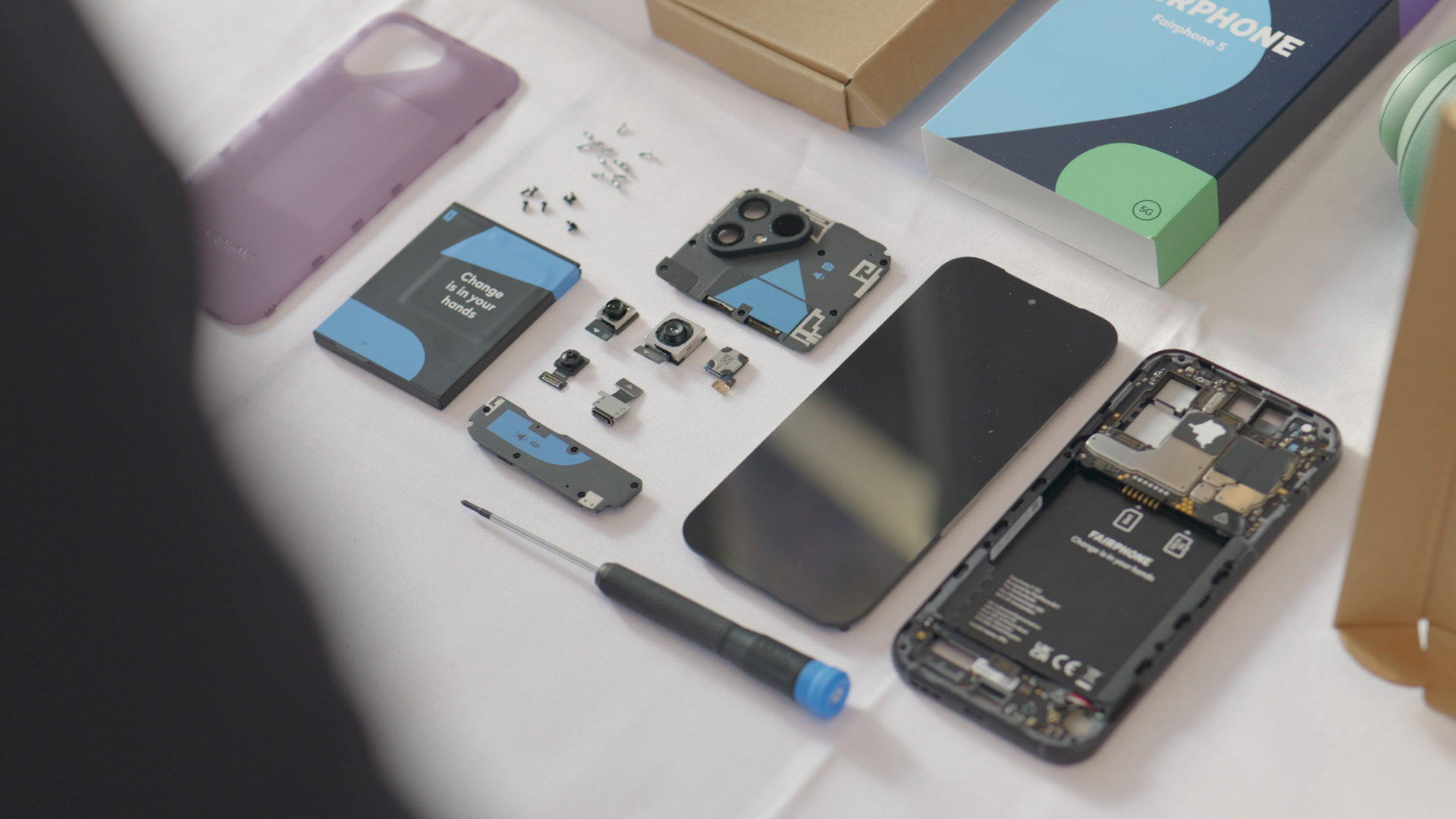Affiliate links on Android Authority may earn us a commission. Learn more.
Repairable smartphones need a futureproof processor too
Published onSeptember 17, 2023
The self-repairable Fairphone 5 has given us much to discuss, whether we’re missing the days of replaceable batteries or in awe at the phone’s best-in-class update policy and eco-credentials. But equally intriguing is the processor powering the phone — a previously unseen Qualcomm QCM6490.
Poking around Qualcomm’s documentation, the QCM6490 is built for IoT applications rather than phones. This explains the phone’s long-term support, as wireless products deployed in the field for many years need to remain secure. The Fairphone 5 will receive at least five years of Android OS updates and at least eight years of security patches. That eclipses the best smartphone update promises of four OS and five years of security, though the updates will arrive at a slower cadence.
The question is, does this chip perform competitively enough for a smartphone built to last so long, or will it feel out of date well before the phone expires? To answer that, we’ve grabbed some benchmarks.
What is the Fairphone 5 processor?
First, let’s dig into what exactly makes up the QCM6490. Its Kryo 670 CPU was first introduced in 2021’s flagship Snapdragon 780G and has powered a small selection of other mid-range smartphone chips. The CPU cluster comprises one Cortex-A78 core at 2.71GHz, three Cortex-A78s at 2.4Ghz, and four low-power Cortex-A55 cores at 1.96GHz. The lack of a big powerhouse core isn’t going to worry today’s flagships, but these cores still provide plenty of performance.
The Fairphone 5 is about much more than specs, but we're still curious.
Graphics are powered by an Adreno 643 clocked at 812MHz. This is the first time we’ve seen this component, but it appears to be a larger and higher-clocked version of the Adreno 642 found in 2022’s mid-range Snapdragon 782G, which boasts a similar CPU setup.
The QCM6490 isn’t completely devoid of modern features. Wi-Fi 6E, Bluetooth 5.2, and a suite of location standards are supported. Wireless capabilities also include mmWave and sub6GHz 5G capabilities, though the Fairphone 5 only uses the latter. There’s AI smarts in the form of Qualcomm’s Hexagon 770 DSP, which is all packaged up in a 6nm process.
Fairphone 5 benchmarks
OK, but how does this all perform? Let’s jump right into the numbers and compare against more mainstream handsets around the phone’s €699 (~$760) price point.
Based on the aforementioned specifications, we weren’t expecting the Fairphone 5 to keep pace with expensive top-of-the-line flagships like the Samsung Galaxy S23 or Apple iPhone 14. Cutting-edge components have certainly eclipsed Qualcomm’s older CPU, but that’s not strictly an issue. Older chipsets still perform remarkably well for many tasks, and the Fairphone 5 falls firmly into that category.
What’s disappointing is that the Fairphone 5 performs notably worse than less expensive phones. It’s outclassed by the Google Pixel 7’s Tensor G2 processor and the mid-range Nothing Phone 2’s last-gen Snapdragon 8 Plus Gen 1, which cost around €200 less. Flagship performance on a budget is very achievable nowadays, but Fairphone has different priorities.
The Fairphone 5’s QCM6490 chip falls closest to the inexpensive Samsung Galaxy A54 5G. Samsung’s mid-ranger offers sufficient performance for web browsing and messaging but certainly isn’t a phone for gamers. However, the Fairphone 5 became hot quickly under stress, raising additional questions about sustained performance and component health.
Will the Fairphone 5 last in the long term?

As we noted during our hands-on time with the Fairphone 5, the phone faces a tricky value proposition. What the phone gains in repairability, longevity, and social awareness, it relinquishes in the form of more typically budget hardware. But the Fairphone’s most significant issue isn’t price; it’s whether it’s as well built to last as it seems.
Long-term software support is no good without future-proof hardware that can keep up. The Fairphone 5 performs as well as some of today’s mid-range phones, but it’ll be duking it out with budget options in two or three years. That’s not a concern for a phone you’ll replace every three or four years, but up to seven years is a very long time in technology. There are serious doubts about whether the phone can keep up with new applications and use cases that arrive with whatever Android looks like before then.
The Fairphone 5 is brilliantly repairable, but its processor will feel sluggish well before its updates run out.
With that in mind, you could pick up an affordable phone like the Galaxy A54 5G ($379.5 at Amazon), throw in a battery replacement, and you’ll still have a phone that’ll hang on for five years thanks to Samsung’s solid update policy. Better yet, pick up the more powerful Pixel 7 ($545 at Amazon) or even the Pixel 7a ($477 at Amazon), which can also stretch out to five years with a bit of TLC.
But, of course, that’s not what makes the Fairphone 5 appealing. The ease of repairability, upgradable storage, and quick swap battery offer far more flexibility than your traditional glued-together flagship. Not forgetting the price tag covers a living wage for factory workers, 70% fair focus or recycled materials, and a five-year warranty. Of course, Fairphone can’t use sheer volume to haggle down component prices, so there’s a manufacturing overhead for the privilege of a phone that’s built differently.
All those merits make the Fairphone 5 stand out and, as our benchmarks show, the phone is still competitive with other mid-range models. But if you are considering the phone as an extremely long-term purchase, just be aware that the phone might not hold up quite so well after five years of service or more.